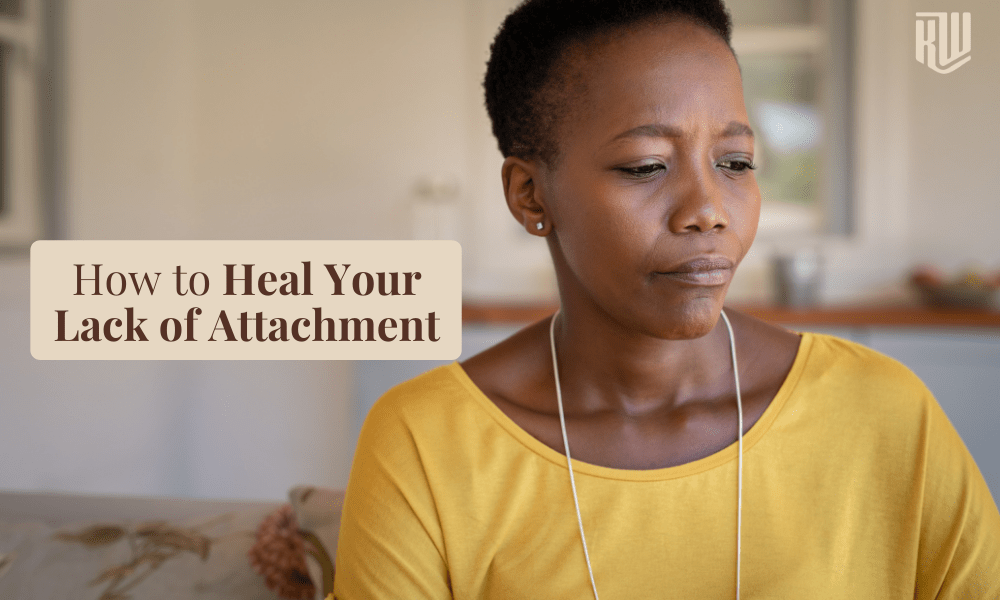In today’s Best Day Blog, I’ll share some tips on how to heal from a lack of attachment.
Feeling lonely, disconnected, or misunderstood by those closest to you or, even worse, by yourself are typical experiences for those who lacked the proper attachment with their parents.
We all experience a lack of attachment
Everybody experiences detachment of varying degrees in childhood. The mistake is to believe that a lack of attachment requires some big transgression. In fact, yelling, being dismissive, sarcastic, poking fun, or withdrawing intellectually or emotionally can result in attachment wounds.
For some, rarely are these memories accessible in adulthood – but the experience and the feeling are still stored in the body. Research shows that even if a child is placed straight into an adoptive mother’s arms, the child will still experience a severe detachment and abandonment right from birth.
Physical presence is not enough to create attachment. If your parent is an alcoholic, for example, as my mother was, in her periods of drinking heavily she was essentially in a walking coma, unable to care for me properly and not available mentally or physically – this created detachment and severe fear.
How can you start to heal this?
- Work with a professional
- Tell your story- Journal your life as a child, narrate it so you can discover the trauma you experienced
- What is your worst day cycle? How are you repeating the same pain as an adult?
- Learn about the attachment styles
- Anxious (also referred to as Preoccupied)
- Avoidant (also referred to as Dismissive)
- Disorganized (also referred to as Fearful-Avoidant)
- Secure
- Begin asking for and meeting your needs and wants
So let’s get into the tips I have for you on how to heal from a lack of attachment.
Step One: Hire a Professional
To get good at anything we have to learn from a professional. To become a great chef, athlete, musician, etc. you can’t do it without a coach or teacher. Ironically, in almost every other aspect of life, if we don’t know how to do something, we hire someone who does, but when it comes to our emotional well-being people either believe they don’t need one or make excuses as to why they can’t do it (it’s too expensive being a very common one). This denial or refusal to get support actually comes from our deep attachment wounds.
The core belief is we’re not worthy, that we don’t want to spend money attaching to ourselves. If you’re not willing to look into support with your journey on healing this attachment wound, it could very well be that your attachment wound is severe and deeply buried. The coach is there for attachment! To be the safety that you never had, to advocate for the child inside you who never had the love and support that you deserved growing up.
Step Two: Learn to Tell Your Story
Journal on all the memories and stories you have of when there was a feeling of detachment growing up. Think of times you asked your parents to play with you and they said no or perhaps you were the youngest child for a while and then a brother or sister was born? Can you still remember how this feels within?
Journaling will help to pull up these memories and remember those times when your parents were perfectly imperfect and couldn’t attach to you.
Step Three: Learn how you are repeating The Worst Day Cycle
I talk about The Worst Day Cycle in my book ‘Your Journey to Success’. Every single one of us replays the trauma from our childhood, whether our lives are going well or not. Our adult decisions can be traced to our childhood experiences. If you’re struggling as an adult, you’re replaying The Worst Day Cycle. We need this information and awareness so we can learn how to heal and move forward.
You can learn more about The Worst Day Cycle here. If you want to learn the complete process, I invite you to read my book.
Step Four: Learn about the 4 Different Attachment Styles
We have all formed attachment styles and three out of the four possible options are maladaptive – they do not benefit you. The three maladaptive styles are Anxious (also referred to as Preoccupied), Avoidant (also referred to as Dismissive), and Disorganized (also referred to as Fearful-Avoidant). The fourth is Secure which very few of us experience.
Remember that all of the best parents do not intend to create these ‘issues’ within their children. Imagine everything that is going on in your life now – working, commuting, social media, the news, household chores and so much more, all crammed into one day – this was the same for your parents who, on occasion, or maybe often, we’re unable to give you the attention you desired because they were busy or tired or distracted. This is not a fault of theirs, but simply the truth of every situation.
Most people fall into the first three attachment styles because we are not taught Emotional Authenticity. Our lack of Emotional Authenticity as a society is why these attachment styles are passed down generationally.
Step Five – Begin Asking For and Meeting Your Wants and Needs
Do you know why 99% of the people I work with can’t answer the question ‘What are your morals and values, needs and wants and negotiable’s and non-negotiable’s?’ Because, as a child, they were brought up to meet their parent’s morals and values, needs and wants and negotiable’s and non-negotiable’s and were never given permission to investigate, discover and express their own. This is part of the attachment disconnect with themselves- if they were better connected internally, they would be able to confidently and quickly list them off without thinking too much about them.
Try not to get overwhelmed by this new information. Be kind to yourself as your progress through these initial heavy steps of the journey. If you need help getting started, I invite you to try out my free masterclass, Your Journey To Emotional Authenticity.
In less than thirty days you will unravel where your attachment wounds originated and more importantly, you will develop the first foundational step to reconnecting with yourself.
Get started here:
Learn more here:





